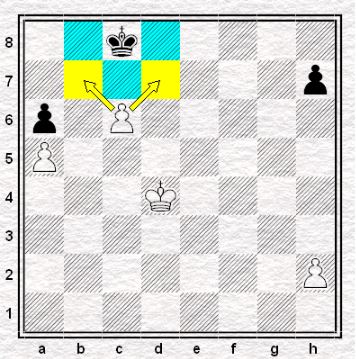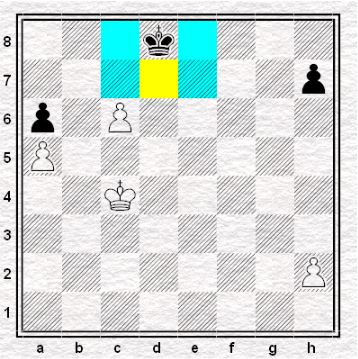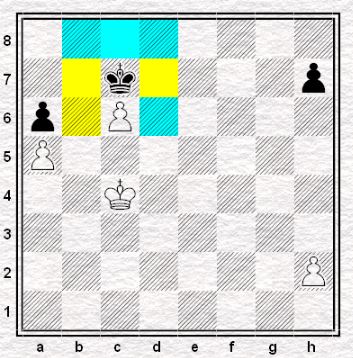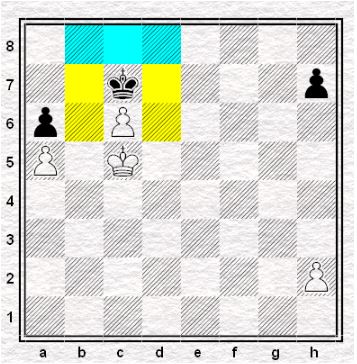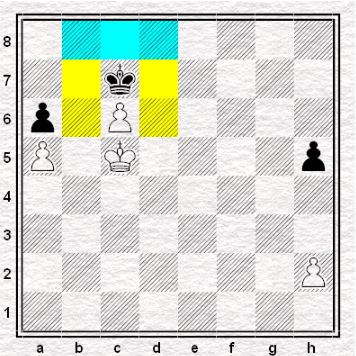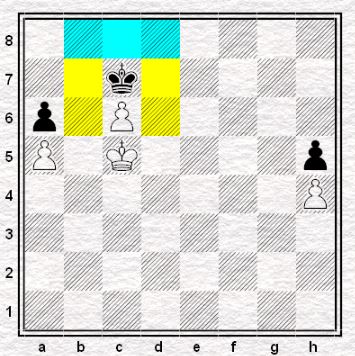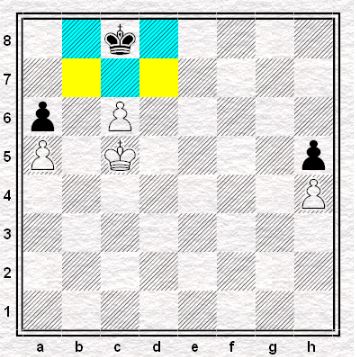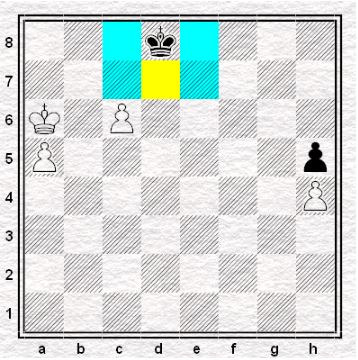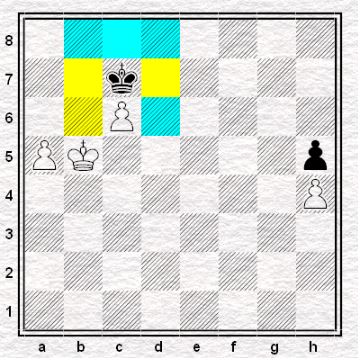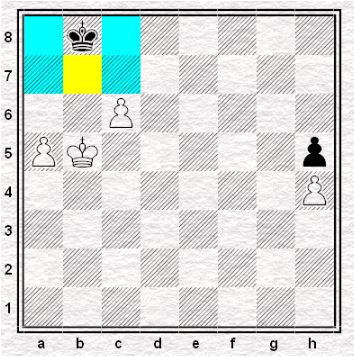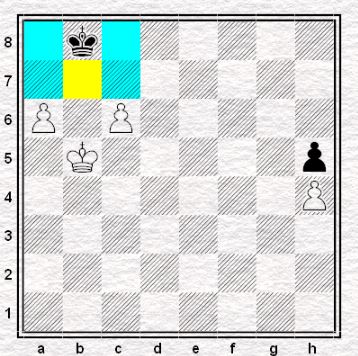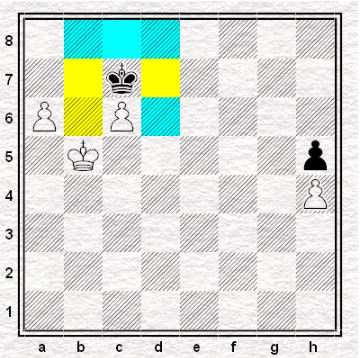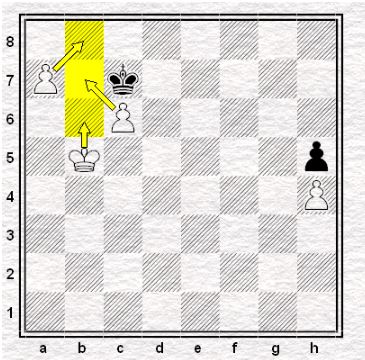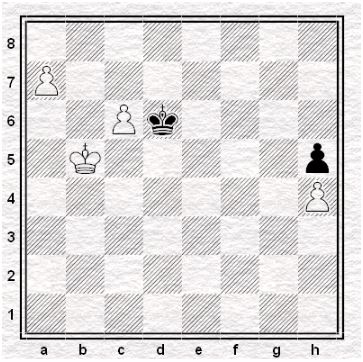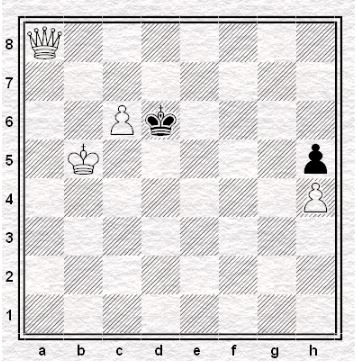Why should I learn it?
Sometimes you are in exactly the position you want to be in—except it’s your move, and you are forced to change this ideal position. That is what triangulation is for: reaching the same position, but with the opponent to move. This way he is forced to give up space while your pieces are in the optimal squares to take advantage of it.
When do I use it?
Triangulation happens most often in King and pawn vs King and pawn endgames. However, you’ll find it also a fixture in Queen vs Rook endings, as well as in a few others, occasionally. You use it, as explained above, to reach the same situation but having ceded the right to move.
Link to Practice Problems
Step-by-Step Guide on Triangulation
It is White to move. Sometimes, to win, one has to fall back.
- Kd4
White prepares to jump into c5 if the Black king jumps into c7.
- …Kd8
Black tries not to step on c7 too soon.
- Kc4
Still preparing to go to c5.
- …Kc7
If Kc8, White would then play Kd5 and achieve the initial position with Black to move. That way, the Black king would still be forced to go to c7 at some point.
- Kc5
This is what White has been waiting for.
- …h5
Somehow trying not to move its king.
(3. …h6 4. h3 h5 5. h4)
- h4
Blocking the pawn and thus forcing the Black king to move.
- …Kc8
Going to b8 or d8 would not be any better.
- Kb6
Planning on taking the pawn on the next move. This move also prevents the Black king from jumping into c7.
- …Kd8
Moving to b8 would not change the outcome.
- Kxa6
The only winning move.
- …Kc7
Threatening to take the pawn.
- Kb5
The only winning move. This move lets White protect the c-pawn while also freeing up the a-pawn.
(7. Ka7? Kxc6 8. Kb8 Kb5 9. Kc7 Kxa5 10. Kd6 Kb5 11. Ke5 Kc6 12. Kf5 Kd7 13. Kg6 Ke6 14. Kxh5 Kf6 15. Kg4 Kf7 16. h5 Kg7 17. Kg5 Kf8 18. Kg6 Kg8 19. h6 Kh8 is equal and thus a draw)
(7. Ka7? Kxc6 8. Ka6 Kc7 9. Kb5 Kb7 10. a6+ Ka7 11. Ka5 Ka8 12. Ka6 Kb8 13. a7+
Ka8 14. Ka6, stalemate)
- …Kb8
Black is in a dilemma on which pawn to stop.
- a6
The other pawn advances.
(8. Kb6 is also winning. 8. …Ka8 9. a6 Kb8 10. c7+ Ka8 (10. …Kc8 11. a7) 11. c8=Q#)
- …Kc7
Black chose to block the c-pawn while also preventing the White king from moving into b6. However, the a-pawn is now free to move forward.
- a7
After this move, Black can no longer chase after White’s a-pawn because the b-file is controlled by White’s pieces.
- …Kd6
Black runs off since the pawn is unstoppable.
- a8=Q
And the pawn gets promoted into a queen, giving White an easy win.

